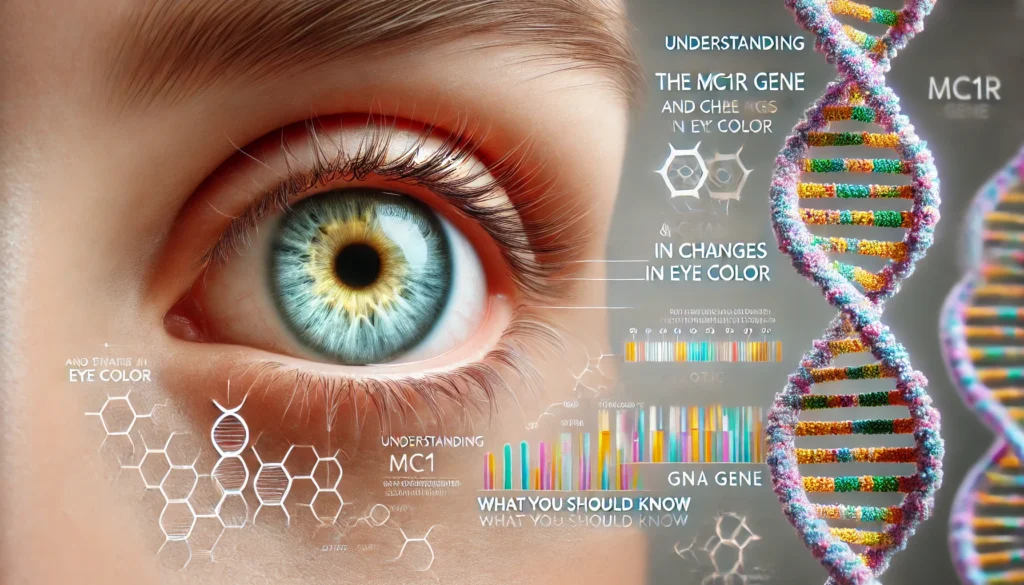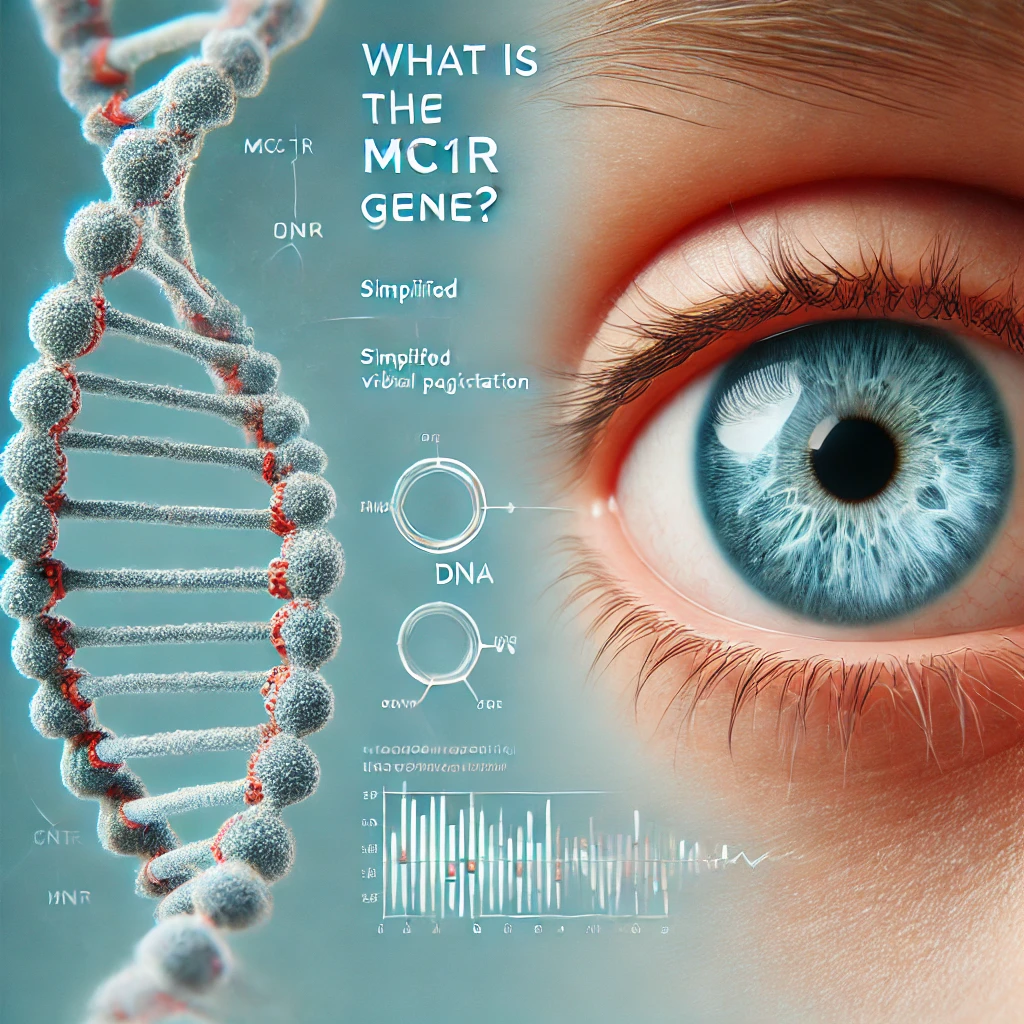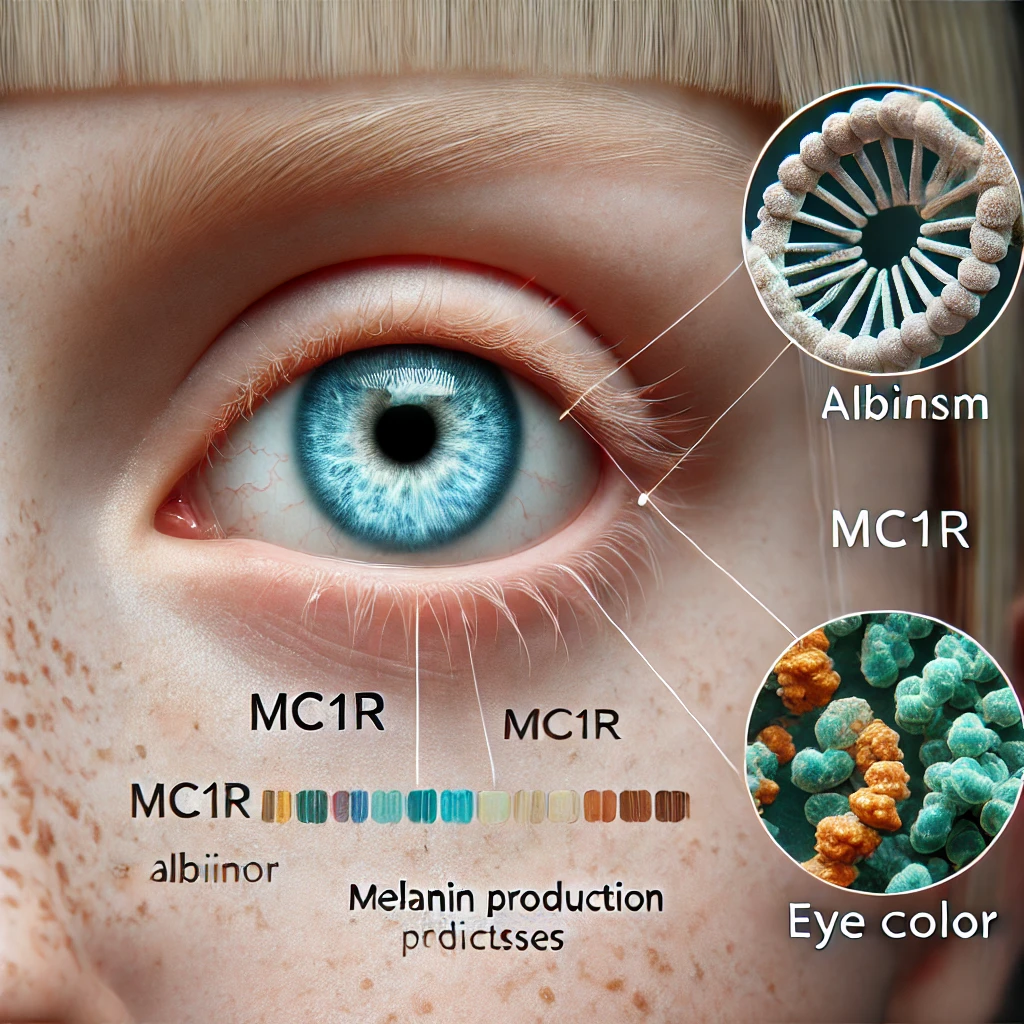Understanding the MC1R Gene and Changes in Eye Color: What You Should Know

- What is the MC1R Gene?
- How Does MC1R Influence Eye Color?
- MC1R, Eye Color Changes, and Health Implications
- The MC1R Gene: Influencing Pigmentation and Eye Color
- MC1R, Albinism, and Eye Color
- Historical Insights and Evolution of MC1R Variants
- Conclusion: The Subtle but Important Role of MC1R in Eye Color
- FAQs About MC1R Gene and Pigmentation
The genetics of eye color involve more than just the common genes OCA2 and HERC2. Another significant player in this process is the MC1R gene. Known primarily for its role in skin and hair pigmentation, MC1R can also influence eye color, particularly when it interacts with other genes. This article explores the function of MC1R, its connection to eye color variations, and some of the genetic mutations that affect pigmentation.
What is the MC1R Gene?

The Function of the MC1R Gene
The MC1R gene (Melanocortin 1 Receptor) provides instructions for producing the melanocortin 1 receptor, which is crucial for normal pigmentation. This receptor is found on the surface of melanocytes, the specialized cells that produce melanin, the pigment responsible for the color of skin, hair, and eyes.
- MC1R and Pigmentation: The melanocortin 1 receptor plays a significant role in determining the balance between eumelanin (brown/black pigment) and pheomelanin (red/yellow pigment). Variants in the MC1R gene reduce the receptor’s ability to stimulate eumelanin production, leading to higher levels of pheomelanin.
Genetic Variants of MC1R and Their Phenotypes
Certain genetic variants in MC1R are associated with well-known characteristics such as red hair, fair skin, freckles, and increased sensitivity to sunlight. These variants reduce the receptor’s ability to stimulate melanin production, leading to lighter pigmentation and, in some cases, lighter-colored eyes.
- MC1R Variants: People with two copies of an altered MC1R gene (R/R genotype) often have red hair and lighter eye colors. These variants may also increase the risk of melanoma due to reduced melanin levels, which provide less protection against UV radiation.
The Role of OCA2 and HERC2 Genes in Eye Color
How Does MC1R Influence Eye Color?

MC1R’s Interaction with Other Genes
The MC1R gene doesn't act alone. It often interacts with other pigmentation-related genes, such as OCA2, which is more directly responsible for determining brown eye color. Studies have shown that in individuals with the R/R MC1R genotype, those with brown eyes tend to have more freckles and moles compared to those with blue eyes. This indicates an interaction between MC1R and OCA2 that can affect both skin and eye pigmentation.
- MC1R and OCA2: The interaction between these two genes demonstrates the complexity of pigmentation. The MC1R gene's impact on melanin production plays a supporting role in determining how dark or light someone’s eye color will be when combined with OCA2.
MC1R, Eye Color Changes, and Health Implications

Can MC1R Mutations Cause Eye Color Changes?
While MC1R is primarily linked to skin and hair pigmentation, its impact on eye color can also be significant. People with mutations in the MC1R gene may notice changes in their eye color over time, particularly in response to hormonal changes or sunlight exposure.
Health Risks Associated with MC1R Mutations
MC1R mutations can increase an individual’s risk of developing melanoma, especially in those with fair skin and light eyes. The reduction in eumelanin production leaves the skin and eyes more vulnerable to UV radiation, leading to a higher risk of UV-related damage.
- Eye Health: People with light eyes and certain MC1R variants are at a greater risk of developing eye conditions such as cataracts and macular degeneration due to their heightened sensitivity to sunlight.
Genetic Factors in Eye Color Shift: What You Should Know
The MC1R Gene: Influencing Pigmentation and Eye Color
MC1R Function
MC1R Variants and Phenotypes
Interactions and Health Implications
Historical Context
MC1R, Albinism, and Eye Color

The Role of MC1R in Oculocutaneous Albinism
In some rare cases, changes in the MC1R gene can influence the appearance of people with oculocutaneous albinism type 2. Individuals with albinism typically have light-colored eyes, but those with changes in OCA2 and MC1R often have red hair instead of blond or light brown hair, indicating the gene’s effect on melanin production in multiple areas of the body.
Historical Insights and Evolution of MC1R Variants

Evolutionary Significance of MC1R Mutations
Genetic mutations in MC1R that lead to lighter skin, hair, and eye colors are believed to have evolved relatively recently in human history. The variant associated with blue eyes and red hair is thought to have appeared only 6,000 to 10,000 years ago in populations migrating to Northern Europe.
- Evolution of Pigmentation: These changes likely occurred as human populations moved away from areas with high UV exposure, where darker pigmentation was advantageous, to regions with lower UV levels where lighter pigmentation was more beneficial for vitamin D synthesis.
Rare Changes in Eye Color: Exploring Heterochromia and Eye Color Shifts
Conclusion: The Subtle but Important Role of MC1R in Eye Color
The MC1R gene plays a subtle but important role in eye color, particularly when interacting with other pigmentation genes like OCA2. While it is more commonly associated with skin and hair pigmentation, MC1R variants can affect melanin production in the iris, leading to lighter eye colors and an increased sensitivity to UV radiation.
If you're interested in learning more about how your genetics influence your eye color, or if you're concerned about how MC1R mutations might affect your eye health, we invite you to explore more resources on our site or consult with a genetic specialist for personalized advice
FAQs About MC1R Gene and Pigmentation
The MC1R gene provides instructions for producing the melanocortin 1 receptor, which regulates melanin production in melanocytes. Variations in this gene reduce eumelanin production, resulting in lighter hair, skin, and eye colors.
Yes, mutations in the MC1R gene are often associated with red hair and light-colored eyes, such as blue or green. The gene affects the balance between eumelanin and pheomelanin.
While MC1R mutations primarily affect skin and hair, they can influence eye color, particularly in individuals with other genetic variants affecting melanin production.
Yes, individuals with MC1R mutations have reduced eumelanin levels, making them more susceptible to UV radiation and increasing their risk for skin cancer and other UV-related conditions.
Yes, in addition to skin cancer, certain MC1R variants are linked to oculocutaneous albinism type 2, where individuals have light hair and skin but may also experience changes in eye color due to reduced melanin production.

Leave a Reply